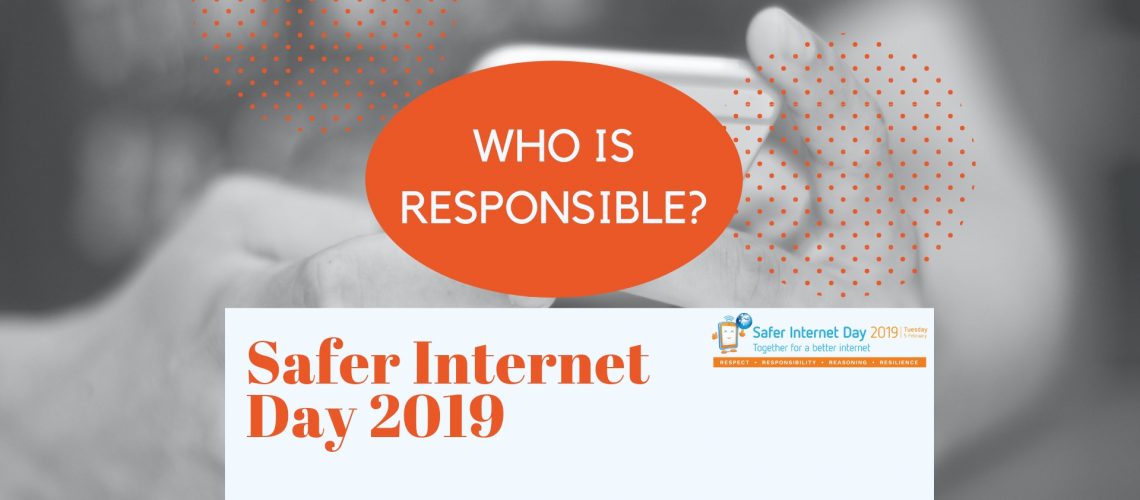Responsibility is the second “R” for Safer Internet Day 2019, along with Respect, Reasoning and Resilience. And in order for everyone to have a better internet experience, it is certainly true that everyone needs to take on that responsibility.
Government
At many levels we need our leaders to look at the data and take on the recommendations of experts to ensure that best practises are being met and that funding is in place to support a safer internet for families, corporations, schools and individuals.
The tech companies
Whether creating apps, games or social networks it is imperative that we insist on best design practice (something the Office of the eSafety Commission are working hard at). We want to ensure we are not chasing our tails trying to come up with bandaid solutions, but instead have the safety features implemented from the start.
Schools
Schools must continue to ensure they are following up on issues that arise from a life where students are spending increasing amount of time in a digital world. It is their responsibility to provide an environment where children have the greatest capacity to learn.
Parents
Certainly some of the most important people in the equation. Schools cannot manage the screens and devices without the backing of parents. When parents put a device in the hands of their child it is their responsibility to understand what the devices are capable of, to know what the possible effects may be and to thus put in place the boundaries they will need. It is their responsibility to have ongoing conversations with their children, to learn more and lecture less, and to focus on ensuring the values they teach in real life, will translate to their child’s online world.
Individuals
Every individual has a responsibility to use the internet in ways that respect others and of course respect themselves. We must all use the technology in ways that add to our lives and hopefully to the lives of others too. To minimise the risks to ourselves and others and to promote positive experiences and outcomes.
Can we do more?
Whilst there are many people using the internet for good and enjoying the many benefits, it must certainly be said that this is not always the case.
For example, in a 2018 Royal Children’s Hospital National Child’s Health Poll, it found that only 44% of kids bullied told their parents and even less reported bullying. That’s a lot of bullying not being addressed and a lot of kids not being heard or getting the help they may need. So we need those people who are online beside these people, connected and watching to do something too. To be the people who help others out and stand up to the behaviours that continue to ensure not everyone is enjoying the benefits of this world.
Getting Help
We also need to be aware and to teach young people of the services out their should they need help. The Office of the eSafety Commission is available for reporting of bullying and to take action against image based abuse. There are many other online support services available for those who may be struggling. But we need our kids to know these services are there, especially if they feel parents are not going to be the advocate they need. We also need our parents to know there are plenty of ways they can get help, find out about the world their children are growing up in and be the advocate they need.
It’s up to us all to ‘keep up’
Whilst this world has moved so fast, we cannot afford to say “it’s all too hard, I can’t keep up”. We don’t have to keep up with every single place our child visits or monitor every single comment or interaction. But we do have to keep up with the sorts of challenges they may face and ensure they have the skills and means to deal with those challenges. It is our responsibility to look at our individual children and see how their experiences are affecting them, in order to help them make the best choices. If we hand them a game or social network, it is our responsibility to know whether it is appropriate, to know they can manage what they may encounter and to know we have done what we can to make their experience as safe as possible.
We do want governments and schools and designers to help deliver the best internet experience for us online. It must certainly be a holistic approach. At the end of the day, I want my car manufacturer to build me a safe car, the government to make the roads safe, and other drivers to do the right thing. I also know I am ultimately in charge of how that vehicle is driven. I need my kids to know that too.
For more information and resources on how you can take part in Safer Internet Day 2019, head to the Office of the eSafety Commission site or the global SID2019 website and read about the first R…..Respect.

